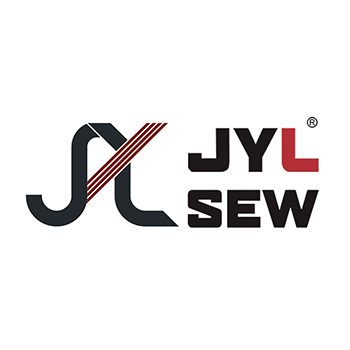A sewing machine generally consists of a machine head, a platen (base) and a frame. When sewing, the stitches are formed by 4 mechanisms in the machine head: firstly, the stitching mechanism penetrates the sewing needle into the sewing material; secondly, the hooking mechanism hooks the sewing thread on the needle under the sewing material Make it self-connected, or interweave or interconnect with the shuttle thread below; then the thread take-up mechanism tightens the thread; finally, the feeding mechanism pushes the sewing material a certain distance to complete the stitch formation process. The actions of these four mechanisms are closely coordinated. Therefore, the sewing machine is a semi-automatic precision machine.
Quality Requirements and TestingThe sewing machine is first required to be able to sew smoothly during use. When sewing within the range of the specified speed, stitch length and the thickest sewing material, there will be no thread breakage, needle breakage, seam leakage, stitches that are not tight and seam seams. Crepe and other faults can still be sewed smoothly when suddenly jumping from the thinnest sewing material specified to the thickest sewing material; secondly, under the specified sewing length, the linearity of the seam, the slippage between the upper and lower layers of sewing material, The consistency of the stitch length does not exceed the specified index, and each mechanism should have the specified performance; the third is to specify
- Home
- About us
- Product
- Hat Sewing Machine
- Industrial Flat Sewing Machine
- Eyelet Sewing Machines
- Eyelet Punching Machine
- Hat Stitching Machine
- Curved Edge Sewing Machine
- Hat Brim Sewing Machine
- Automatic Sewing Machine
- Automatic Velcro Sewing Machine
- Semi-automatic Sewing Machine
- Adjustable Buckle Fixing Machine
- Elastic Cutting Sewing Machine
- Velcro Welding Machine
- Hot Air Seam Sealing Machine
- Ultrasonic Sewing Machine
- Ultrasonic Holes Punching Machine
- Button Wrapping Machines
- Double Needle Flat Sewing Machine
- Shoes Sewing Machine
- Electronic Bartack Machine
- Double Needle Sewing Machine
- Punching Sewing Machine
- Computer Pattern Sewing Machine
- Shoe Ribbon Sewing Machine(Thread)
- Herringbone Rotary Sewing Machine
- Heringbone Rotary Sewing Machine(Thread)
- Cyclic Displacement Pattern Sewing Machine
- Heelpieces Automatic Sewing Machine
- Jeans Sewing Machine
- Garments Sewing Machine
- Special Industrial Machine
- Hat Sewing Machine
- Case
- News
- Contact us



